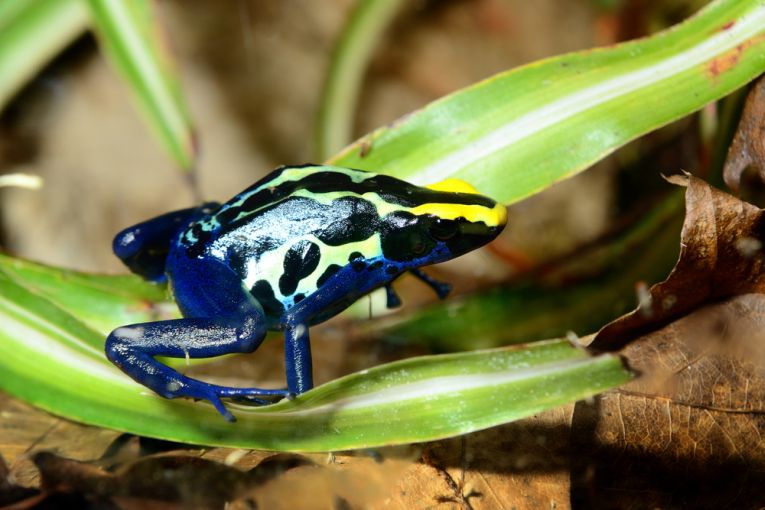The poison frogs have a reputation. They must be avoided in nature by all predators and they need to display their brilliant colours to show this. Male frogs look after their young in these species and the latest research shows an intriguing method they use in doing this.
Behavioural Ecology and Sociobiology publish the work of Bibiana Rojas from the Finnish University of Jyvà ¤skylà ¤ in Strange parental decisions: fathers of the dyeing poison frog deposit their tadpoles in pools occupied by large cannibals.
She found the pools chosen by the frogs were always those with older tadpoles in them. Disconcerting for the hatching tadpoles to be eaten before they're able to escape, but most fortunate for the older cannibals. In French Guiana, Dendrobates tinctoria lay clutches of only 4-5 eggs which the males then convey to tree-holes or spaces in the bracts of palm trees. After 2 months the metamorphosis takes place to release the tiny amphibians from their tiny watery "prison," but only if it doesn't dry up.
A large tadpole from the same species will indicate to fathers that this pool is a good location for growth, but the choice of pools that are suitable is very limited. Bibiana Rojas comes to the conclusion that predation is a risk better taken than the risk of unsuitable habitat. As she says, "the decision is like a gamble for the frog father." Thinking ability is taken out of the argument, so this great achievement of survival against the odds is a trait that this species has developed simply as Darwinian section process. Those that become adult will have the trait to continue using already-occupied larval habitats.
With chytrid fungal threats bringing many species close to extinction, it could even be that this kind of behaviour is the most successful frog "antidote." You would conclude also, of course, that, like many amphibians, the parent is simply feeding the species with its own newer offspring. The older tadpole could be the offspring of that male, placed there 2 months earlier. Without such food, he may die.
Dr. Rojas is the supreme judge however, as she concludes that, "predation/cannibalism is not the only factor that parents assess when choosing deposition sites, and that the presence of larger conspecifics may instead provide information about pool quality and stability."










